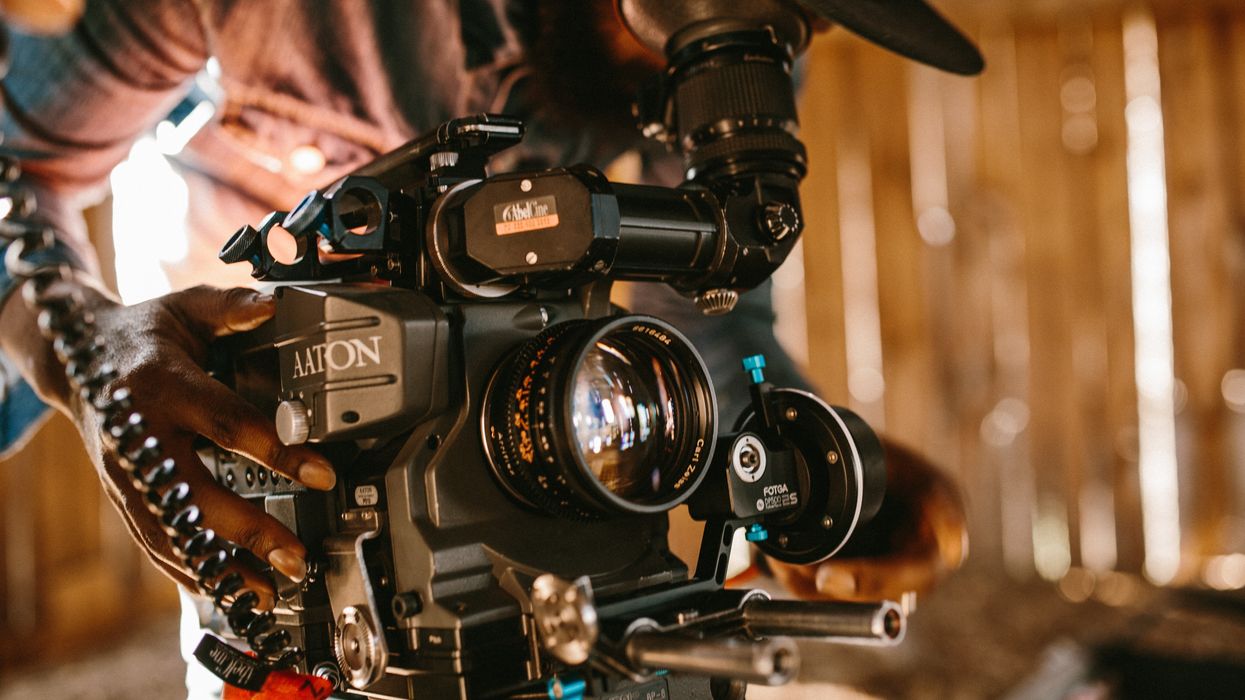World Premiere: 'Nora' Filmmakers Go All-in on 35mm Short
Director Skyler Lawson and 5AM films are back with a new 15 minute short—shot on just nine cans of 2-perf 35mm film. See it here first.

After a rare chance at some free expired film, Skyler Lawson set out to prove to himself that his stories require a bigger canvas. Set in what Lawson calls a "new American depression," Nora is a haunting visual homage to the crushing responsibilities that weigh on the young. After premiering his previous short Clayfist in 2015, we caught up with Lawson about going broke for Nora, growing into the feature film format, and how shooting on 35mm enhanced his process.
First, watch the film here:
NFS: How did you know that this project was the one worth going broke for?
Lawson: I wanted to write about things that were weighing on me, and I wanted them to be things that I would still be into by the time it was over. I wanted to pay homage to my upbringing and really honor where I came from. I felt I owed my upbringing everything so I felt I owed [the film] everything. From the moment that 35mm was on the table, we were all in. I thought this might be the last short film I might make for a while, and I wanted to not play it safe from then on. Maybe it’s just me being stupid, but sometimes it’s healthy to be under more pressure.
"If your job as a director is to inspire everyone to do their best work, shooting on film did a lot of that before I ever said action or opened my mouth."
NFS: How did you approach the writing knowing you were shooting on 35mm?
Lawson: I was glad people were willing to go on the ride with me because the script is not conventional. It felt pretty ambitious to pull off on paper. The story is told in reverse, the way it shows up on screen is exactly how it is written. I had written it to the locations and landscapes that I had scouted. A lot of the film relies on the essence you get from those landscapes.
At the same time, I didn’t want to tell the cinematographer what to do in the script. There’s not a lot of dialogue, and I didn’t know if it would translate to a reader, but everyone who read it responded to it.

Lawson: When we got on set, we chose to not have a monitor. We needed to be in the moment—we didn’t plan the shots, we wanted to make those decisions on the day. We didn’t have everyone standing around a monitor, we were judging by performance. I wanted to inspire him to do his best work and let him find the image by himself. With actors, they can tell when you’re more excited about the equipment than them.
NFS: How did your actors respond to the 35mm?
Lawson: In the end the actor is your boss. If there’s a bad performance, you’re stuck with a bad performance. I love that we were able to focus on them. We only had three takes per scene, so there’s a lot of pressure on them to perform. But since we were shooting on film, everyone brought their A-game. Yes, the image is lush and beautiful, but the intangible benefit of shooting on film that it brings an excitement and urgency to set and everyone wants to perform on their highest level.
"Life’s too short and if you wait around for people to hand you things, they won’t."
NFS: Any filmmaker knows there's always changes to the script and new things happening on the shoot day. When working with such little footage, how do you know when to improvise ?
Lawson: I dedicated two cans of film to all improv. We were trying to make an honest piece and, when things aren’t genuine, people can feel it. I like to let things breathe. It’s important to show that these people are real, so letting them co-exist and be free I think is healthy for an actor. The scene [by the lake] we only did one take of, but it was some of the most honest stuff we got.
Actors living in the moment lead to me writing more organic dialogue for the feature script. Actors are artists and putting themselves on the line and being very vulnerable for you. I think letting them express themselves and how they feel is a real gift that gets overlooked.

In terms of editing, The big set pieces were in place, but as I started to edit, it’s always like you’re a slave to what you’ve shot. You’re not a slave to the script anymore. You have to whittle it down into something that resonates emotionally.
"Having all of my money in it made it worth it because it was the most freeing thing and humbling thing that I’ve done in my career."
NFS: In what ways did making 'Nora' on 35mm prepare you for the feature format?
Lawson: I thought I was always trying to fit feature length worlds into short films. But after I took all those risks and the film was done, I was so inspired by the experience that I quit my agency job cold turkey and have been writing the feature version of Nora. We wanted to see if we were capable of moving to the next level, and having everyone believe in you and have them in your corner can be really validating.
I was the first born in my family, and for me to not take over that tradition, I wanna make sure that decision is worth it. I should be striving to make sure that decision is worth it. Life’s too short and if you wait around for people to hand you things, they won’t. After doing this, how can I go back to an agency job?












